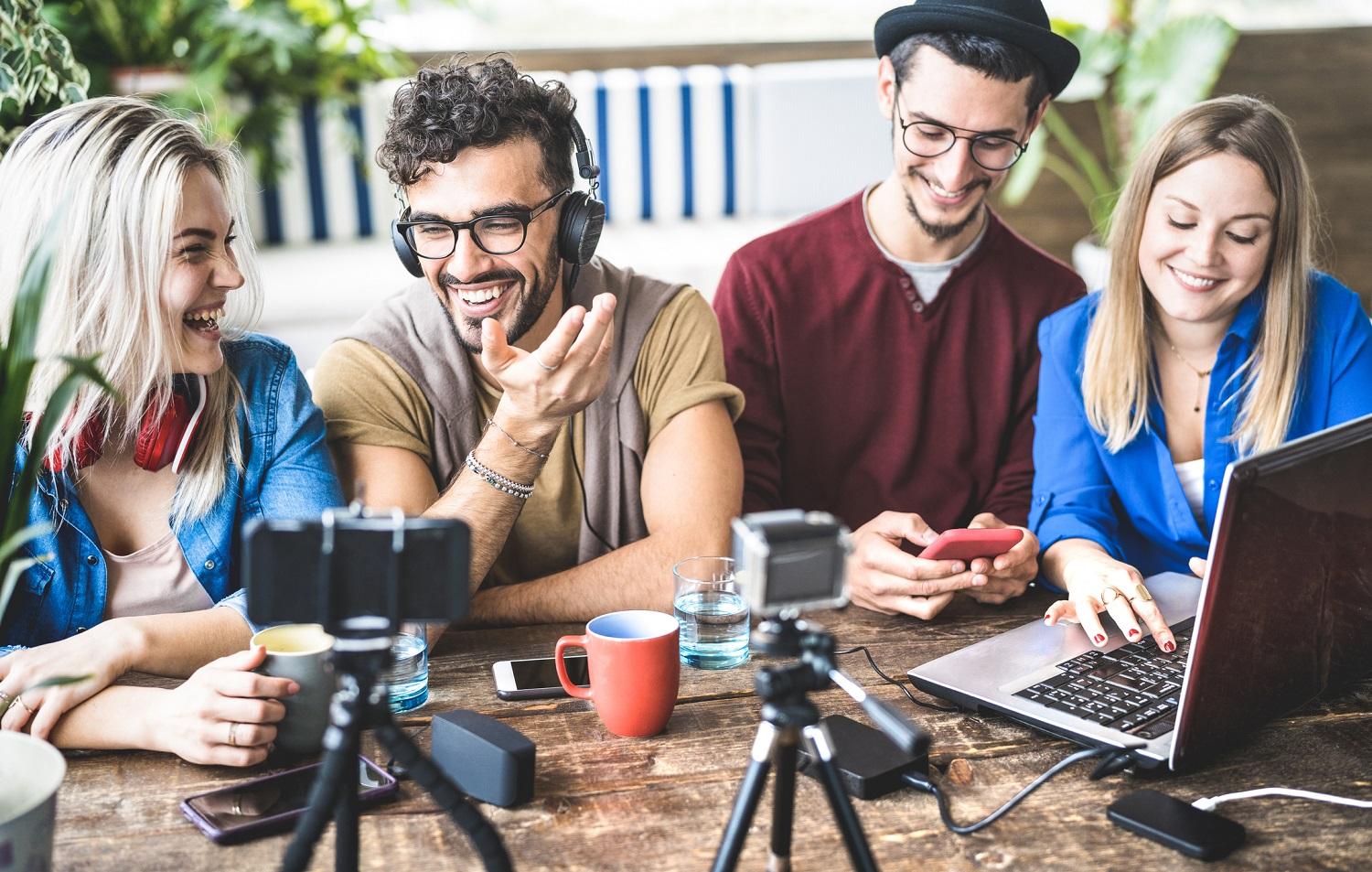MENU
Starting a Business
- Best Small Business Loans
- Best Business Internet Service
- Best Online Payroll Service
- Best Business Phone Systems
Our Top Picks
- OnPay Payroll Review
- ADP Payroll Review
- Ooma Office Review
- RingCentral Review
Our In-Depth Reviews
Finance
- Best Accounting Software
- Best Merchant Services Providers
- Best Credit Card Processors
- Best Mobile Credit Card Processors
Our Top Picks
- Clover Review
- Merchant One Review
- QuickBooks Online Review
- Xero Accounting Review
Our In-Depth Reviews
- Accounting
- Finances
- Financial Solutions
- Funding
Explore More
Human Resources
- Best Human Resources Outsourcing Services
- Best Time and Attendance Software
- Best PEO Services
- Best Business Employee Retirement Plans
Our Top Picks
- Bambee Review
- Rippling HR Software Review
- TriNet Review
- Gusto Payroll Review
Our In-Depth Reviews
- Employees
- HR Solutions
- Hiring
- Managing
Explore More
Marketing and Sales
- Best Text Message Marketing Services
- Best CRM Software
- Best Email Marketing Services
- Best Website Builders
Our Top Picks
- Textedly Review
- Salesforce Review
- EZ Texting Review
- Textline Review
Our In-Depth Reviews
Technology
- Best GPS Fleet Management Software
- Best POS Systems
- Best Employee Monitoring Software
- Best Document Management Software
Our Top Picks
- Verizon Connect Fleet GPS Review
- Zoom Review
- Samsara Review
- Zoho CRM Review
Our In-Depth Reviews
Business Basics
- 4 Simple Steps to Valuing Your Small Business
- How to Write a Business Growth Plan
- 12 Business Skills You Need to Master
- How to Start a One-Person Business
Our Top Picks
Get Camera Ready: Livestreaming Is the Future of Social Media

Table of Contents
Many social media platforms, including Facebook and Instagram, have livestreaming functionality. But livestreaming isn’t just for celebrities and influencers; businesses are increasingly using livestreaming on social media as a marketing tool.
Businesses can use livestreaming as a form of social media marketing to connect with customers, generate more followers, demonstrate products and services, and educate and entertain viewers while moving them closer to a sale. We’ll explore what livestreaming is, how it can benefit a brand and how to get started.
What is livestreaming?
While most social media platforms let users upload video content, livestreaming is video content in real time. Since it’s in real time, livestreamers can take and answer questions and interact with viewers. You can also record livestreamed presentations and post them online later to reach a larger audience.
In the past, livestreaming was solely a function of the best video conferencing services, such as Zoom, Skype and Webex by Cisco. However, livestreaming via social media platforms is now the norm. Major social media platforms have enormous potential audiences for livestreamers. Since users already have social media apps and mobile browsers on their smartphones and tablets, they don’t have to download or set up additional software to view a livestream.
How can livestreaming benefit your business?
According to 2024 Wyzowl video marketing statistics, 82 percent of consumers have been convinced to buy a product or service because of a video they watched, and 89 percent want to see more videos in the coming year. With such a ready and receptive audience, there are several upsides to using livestreaming for your brand.
- Livestreaming helps brands connect with viewers. People love video, making livestreaming an engaging format that helps viewers connect with presenters. It allows businesses to showcase processes and products in use, display graphs, play music, and present images and other data. Viewers can absorb a great deal of information in a relatively short time without reading or researching.
- Livestreaming is easy and cost-effective. In the past, producing and editing high-quality videos was expensive and complex. Livestreaming on social media platforms has changed the game, making it easy and inexpensive to create and share compelling videos that can boost revenue. You don’t need a studio, sophisticated camera or high-tech editing software to livestream. All you need is a smartphone or webcam, decent lighting, and a social media account.
- Livestreaming extends your reach. Since people can watch a livestream video from anywhere, your potential audience is exponentially extended. Viewers don’t have to be within driving distance of your location or even in your country to view your content. Additionally, there’s no shortage of social media users who can view your livestream. Social media usage is nearly ubiquitous among adults in the United States, with 246 million active social media users in 2024, according to data presented by The Global Statistics.
- Livestreaming builds trust and authority. Potential customers gain confidence in your company when they see your product in action. A live feed is instrumental in building trust and strengthening your company’s reputation; it’s happening in real time, and the company can’t edit malfunctions and bloopers. A live event lends authority to the information you’re presenting. Because viewers can ask questions, they can satisfy themselves that the presenter is a subject matter expert.
- Livestreaming can humanize your company. It’s easy for businesses, particularly e-commerce ones, to become faceless. A livestream shows customers that actual humans are behind the company, allowing them to connect with your brand emotionally. Showcasing your manufacturing process, employees, founders or customers heightens this effect.
- Livestreaming helps you find your biggest fans. Your livestream viewers will often have a strong connection to your company. They may be loyal, high-value customers; people who have already interacted with your brand; or people who have been referred by someone they know. Livestreaming is an excellent opportunity to build brand advocacy, connect with fans, and encourage them to buy products or refer customers.
- Livestreaming increases your visibility. Most social platforms prioritize live content in their algorithms, so live content appears at the top of followers’ feeds. You can also benefit from preregistered viewers spreading
According to a Livestream.com and New York magazine survey, 80 percent of people would rather watch a livestream than read a brand’s business blog.
When should businesses use livestreaming?
Not every business will benefit from livestreaming. However, livestreaming could be a positive strategy for your company if these statements are true:
- You have an online community that regularly engages with you.
- You are well spoken and not camera-shy.
- You have a product that works so well that a demonstration will be impactful.
- Your customers are curious about your company’s processes.
- Your product or service is expensive, and some free education might help potential customers feel more comfortable with your value proposition.
- You’re launching a new product or service.
- People have heard of you but aren’t sure what your company does and how it can help them.
- Your customer base is geographically scattered.
- Your company offers a new, innovative product or puts a twist on an old product, and it must be explained and demonstrated.
What are the top livestreaming platforms?
The most effective livestreaming social media services are Facebook Live, Instagram Live, YouTube Live, TikTok and X (formerly Twitter).
Facebook Live
Facebook Live is one of the most popular livestreaming options due to its early rollout and huge user base. With Facebook Live, you use your equipment to broadcast live on your page’s stream to all your followers.
Facebook Live makes livestreaming seamless. The platform provides an easy-to-find, easy-to-use Live button on new posts and lets creators save their livestreams to post later.
You can control who sees your broadcast:
- Anyone (on or off Facebook)
- Friends
- Specific people
- All friends, with some exceptions
- Only friends you select
- Close friends (a custom list)
- Only you (good for trial runs)
Facebook Lives also lets creators do the following:
- Access advanced settings, such as allowing viewers to rewind
- Provide a text description for those who join late
- Add filters and effects to the video to retain interest
- Write and draw on top of the screen to highlight important items or ideas
- Create polls to make your livestream more interactive
To host a successful Q&A on Facebook Live, promote your livestream in advance, prep the main points you want to cover and interact with your viewers.
Instagram Live
Instagram, owned by Facebook’s parent company Meta, also has a livestreaming capability. Here’s how to access it:
- Tap the plus sign from anywhere on your news feed.
- Select Live.
- Add a title.
- Choose your broadcast audience
- Tap Record.
Followers who are currently online will receive a notification when you go live. The livestream will appear at the front of the Instagram Stories menu, helping you expand your audience beyond those already aware of your event.
You can see and reply to real-time comments during the event, increasing the livestream’s interactive nature. You can block specific commenters or filter out particular phrases and keywords so you don’t get distracted by haters and trolls. Instagram Live events can be up to four hours long and scheduled up to 90 days in advance.
Instagram Live works well for Instagram business accounts of highly visual brands, such as those in the beauty, fashion and travel industries.
YouTube Live
The birthplace of online video, YouTube has continued its quest to bring video of all kinds to its over 2 billion users. Most people on YouTube Live use a desktop or laptop computer instead of a smartphone. In fact, you are required to use a computer for livestreaming unless you have at least 50 subscribers, in which case you can stream from mobile with audience limitations. (Users with more than 1,000 subscribers can use mobile livestreaming without audience limitations.)
Because companies on YouTube are usually familiar with video marketing, they’re more likely to have high-end cameras, lighting and microphones, so the video quality tends to be higher than on other social platforms.
Existing subscribers will be notified of your livestream event, and you can use your channel and stream to boost each other with YouTube’s cross-promotion features.
To start your live YouTube stream:
- Select the camera icon in the top right corner of your browser (or the plus sign on the mobile app).
- Select Go Live.
You can create a title, select your audience and visibility, and invite guests to go live with you.
TikTok Live
TikTok is the short video social media network of choice for millennial and Gen Z users. If this user base describes your target market, TikTok livestreams are likely a good choice. Like other livestreaming apps, you can use filters and create a title and cover photo. A unique feature of TikTok’s livestream is that viewers can send “gifts,” digital rewards the streamer can redeem for real money. This function allows you to turn your livestream into an instant revenue-generating event.
TikTok livestreams are limited to one hour, which is a shorter period than other platforms. However, this is likely ample time for TikTok’s user base, as TikTok recommends keeping livestreams under 30 minutes.
To livestream on TikTok, you must be at least 18 years old and have at least 1,000 followers on the platform; you must be at least 18 to receive gifts as well.
To start a livestream in the TikTok app:
- Tap the plus sign.
- Scroll until you see the Live option in the menu. (If you don’t meet the livestreaming requirements, you won’t see this option.)
- Select Live.
TikTok Live is one of the only livestreaming social media platforms that allows you to earn money directly from your livestream within the app.
X (formerly Twitter) Live
X has two livestreaming options. First, X has live broadcast features within the platform that allow users to stream live video to appear on their profile and followers’ timelines. (Your account must be public to start a livestream.)
To start your livestream on X:
- Tap the camera icon from the composer.
- Select Live from the bottom menu.
- Add a description and location. (Use X hashtags in your description to help people find your event in their feeds.)
- Select Go Live.
Another X livestreaming option is Spaces. A few years ago, X absorbed Periscope, one of the original livestreaming platforms, and renamed it Twitter Live. Due to product realignment and declining usage, Periscope was discontinued in 2021. Instead of bringing Periscope back, X added its live video capabilities to Spaces. What was once simply a live audio feature for X now lets users enable video during their chat sessions. Similar to other livestreaming services, Spaces users can livestream using their front- or back-facing cameras.
X users are often interested in news and technology, so if your company provides that kind of product or content, an X live broadcast or Spaces livestream may be a good choice.
Livestreaming best practices
Livestreaming is an engaging way to showcase your company, products and expertise. It’s also an excellent method for expanding your customer base.
To take advantage of this technology, consider the following streaming strategies:
- Make your livestream unique. Like any digital marketing strategy, your livestream should have a unique theme or angle. Consider what sets you apart from the competition. It could be your expertise, special product features or uses, an artisan manufacturing process, or your outstanding team and support.
- Focus on your livestream audience’s needs. What does your audience need? If it isn’t already familiar with the product or subject matter, it may need an explanation about how it works. Maybe audience members know what you do but aren’t convinced your offering provides enough value. In this case, you’ll want to show actual results, case studies and use cases, perhaps with some testimonials. Remember that viewers must be engaged and entertained, so be sure to keep their attention.
- Surprise your livestream audience. Livestreaming is the perfect format for surprising and delighting viewers. You can do this by offering something of value for free or surprising them with an unannounced cameo by an influencer.
- Promote your livestream. Don’t assume people will show up just because you scheduled a live event. This is rarely the case. Promote your livestream to your email marketing list, on your social media accounts, in person and on your website. You can even use social media advertising to promote your event with a Facebook-boosted post or promoted tweet. Give people a teaser of the content to establish that it’s worth their time.
- Remind people about your livestream. Too often, people sign up for a webinar or livestream, get bogged down in their daily lives, and skip the event. Encourage people to preregister for your event and note if only limited spots are available. You’ll acquire their names and email addresses so you can schedule automated email reminders.
- Interact with your livestream viewers. Before starting, give people a few minutes to log on. As you see people logging on, acknowledge them by name and welcome them. If you have viewers from all over the country or world, mention where they’re from so viewers see you have a broad audience. Tell viewers if you will take questions throughout the presentation, at specific points or afterward only, and tell them how to ask questions (by video or in the chat box). Taking questions in the chat box allows you to choose the best questions to help the most people.
- Wrap up with a call to action. At the end of your presentation, tell viewers what you want them to do next. Do you want them to make a purchase, set an appointment, see more content, or attend an event? Ideally, they’ll be happy with the value you provided in the livestream, making them more likely to move forward in the sales funnel.
Skye Schooley and Eleonora Israele contributed to this article.






